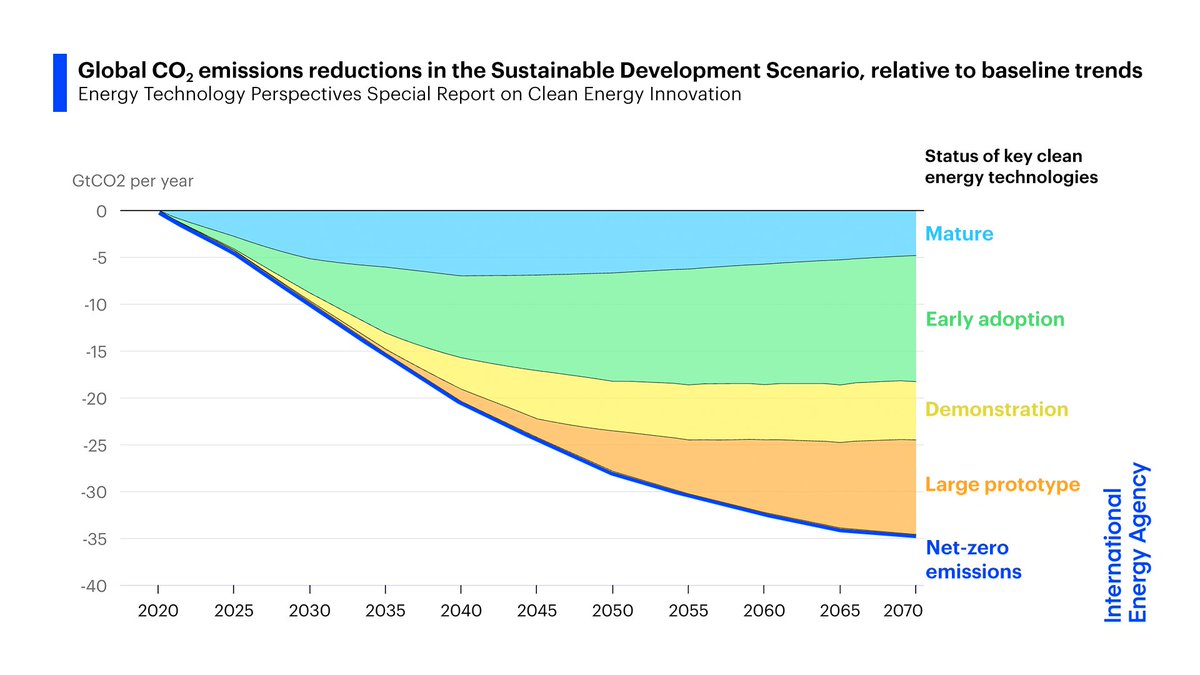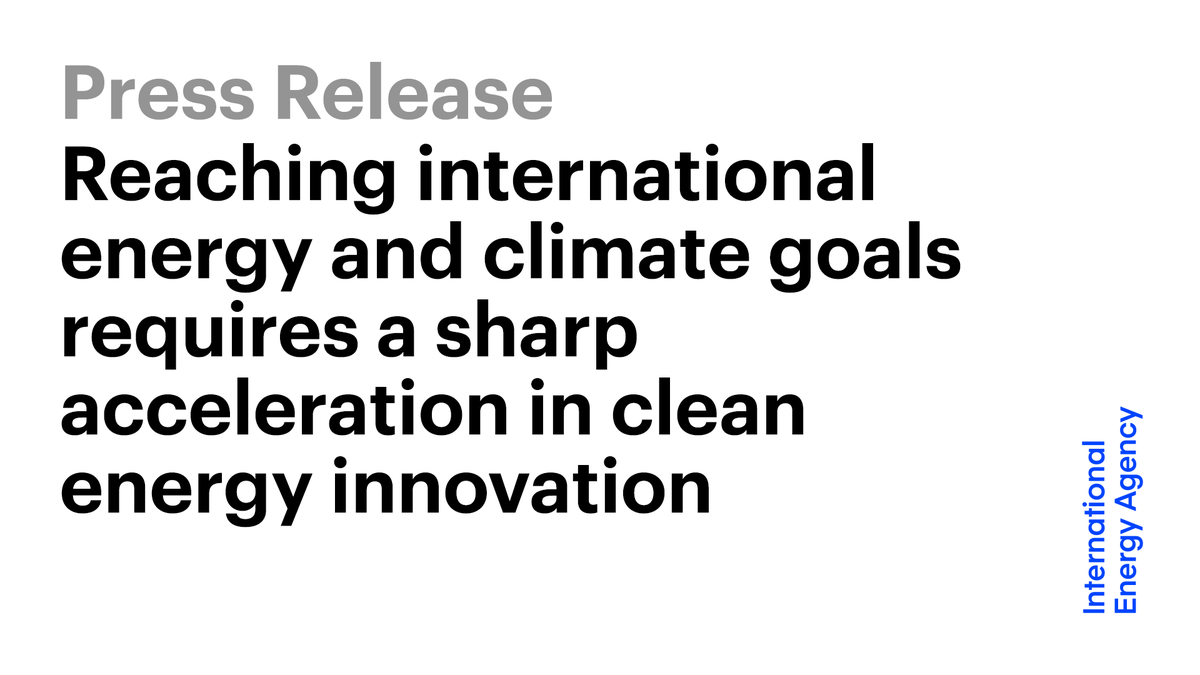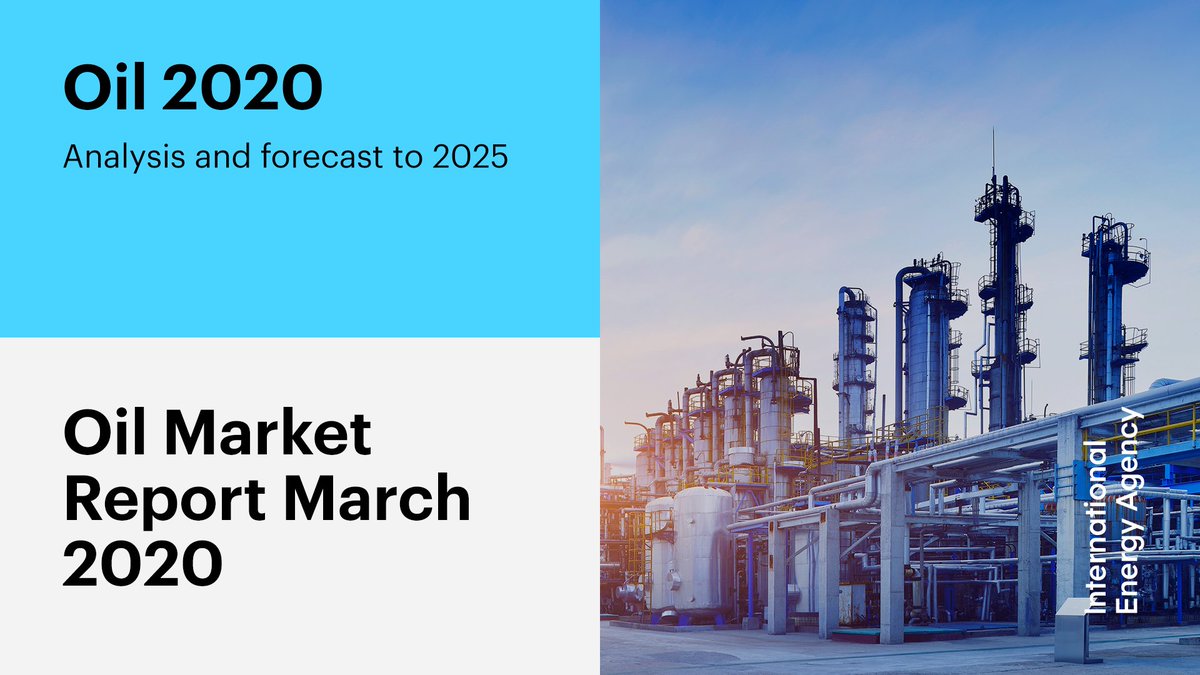
The World Energy Outlook 2020 is out!
It shows how the Covid crisis has brought deep disruption & uncertainty to the energy sector.
Whether it helps or hinders clean energy transitions will depend on how the pandemic plays out & how governments respond: iea.li/3dpw9wb
It shows how the Covid crisis has brought deep disruption & uncertainty to the energy sector.
Whether it helps or hinders clean energy transitions will depend on how the pandemic plays out & how governments respond: iea.li/3dpw9wb
Solar is becoming the new king of the world’s electricity markets, leading the renewables charge.
It is set to triple before 2030 under today’s policy settings & has the potential to grow much faster, followed by onshore & offshore wind.
More on #WEO20: iea.li/34Pxfh5
It is set to triple before 2030 under today’s policy settings & has the potential to grow much faster, followed by onshore & offshore wind.
More on #WEO20: iea.li/34Pxfh5
There's lots of talk about peak oil demand, but it misses the point.
#WEO20 shows that the era of global oil demand growth will end in the next decade. But without a big shift in government policies, there's no sign a rapid decline is coming.
More ➡️ iea.li/3iTW5Bp
#WEO20 shows that the era of global oil demand growth will end in the next decade. But without a big shift in government policies, there's no sign a rapid decline is coming.
More ➡️ iea.li/3iTW5Bp
Global emissions are set to rebound much more slowly than after the 2008-09 financial crisis.
But #WEO20 makes it clear that the 🌍 is far from putting emissions into decisive decline. And low economic growth is not a low-emissions strategy.
More: iea.li/3dpw9wb
But #WEO20 makes it clear that the 🌍 is far from putting emissions into decisive decline. And low economic growth is not a low-emissions strategy.
More: iea.li/3dpw9wb
Putting the 🌍 on track to reach net-zero emissions by 2050 would demand enormous and all-encompassing efforts over the next 10 years from companies, citizens, investors &, most of all, governments.
#WEO20 has @IEA's 1st detailed modelling on this: iea.li/3jTTwk6
#WEO20 has @IEA's 1st detailed modelling on this: iea.li/3jTTwk6

Using new technologies to avoid future emissions isn't enough.
If today’s coal plants, steel mills, cement factories & other infrastructure keep running in the same way as before, that alone would lock in a temperature rise of 1.65 °C.
If today’s coal plants, steel mills, cement factories & other infrastructure keep running in the same way as before, that alone would lock in a temperature rise of 1.65 °C.

The Covid crisis is hurting vulnerable populations the most.
The number of people without access to electricity has been decreasing in Sub-Saharan Africa since 2013, but #WEO20 shows the pandemic is putting this into reverse. The number is set to rise by 13 million in 2020.
The number of people without access to electricity has been decreasing in Sub-Saharan Africa since 2013, but #WEO20 shows the pandemic is putting this into reverse. The number is set to rise by 13 million in 2020.

Lots more insights from #WEO20 are available on iea.org.
And you can join me and lead authors, @Laura_Cozzi_ & @tgouldao, for a livestreamed presentation of the report’s key findings at 10:30 CEST ⬇️ twitter.com/i/broadcasts/1…
And you can join me and lead authors, @Laura_Cozzi_ & @tgouldao, for a livestreamed presentation of the report’s key findings at 10:30 CEST ⬇️ twitter.com/i/broadcasts/1…
• • •
Missing some Tweet in this thread? You can try to
force a refresh






